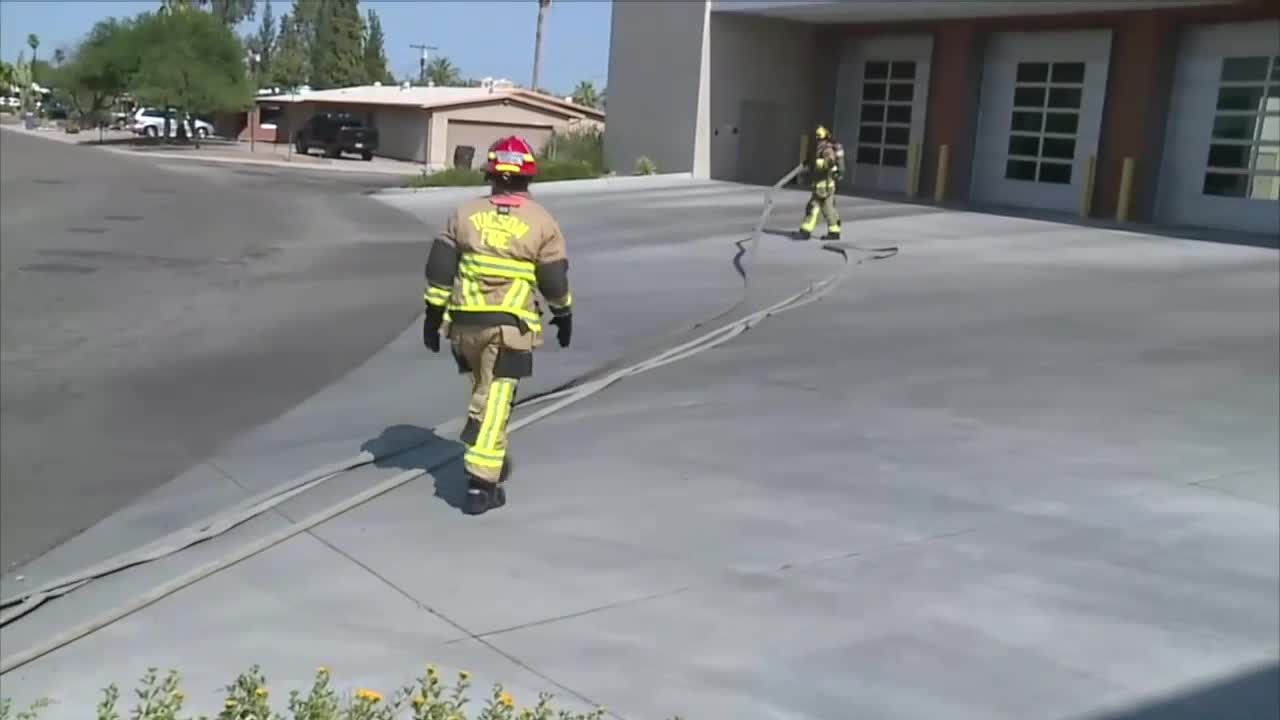TUCSON, Ariz. — Firefighters don’t just have to worry about battling fires, but also what chemicals they are being exposed to while on the front lines and how it effects their health, especially women firefighters.
The Tucson Fire Department (TFD) and the University of Arizona (UA) have been working on multiple projects under the Firefighter Cancer Cohort Study (FFCCS) researching the health risks firefighters face, including a Women Firefighters Study - evaluating causes of stress, cancer, and harmful effects on reproductive health.
The Women Firefighter Study began in 2020 and as of June 2025, 1,179 women firefighters have enrolled from more than 200 departments across 30 states.
Over 25 women firefighters from TFD are participants in the study and in Arizona, there are more than 100.
Sharon McDonough, TFD Fire Chief, says this study is extremely important because she wants her employees to stay healthy and well, and one of the biggest ways to do that is by prevention.
"It requires we have an understanding what the risks are in the first place, so that's what this study helps us find," Chief McDonough said.
She said some of the concerns are, “Could some of our work cause miscarriage or premature birth or an increase in breast cancer, or any of those things that are magnified because of the toxins we’re exposed too?"
To answer these questions, every two years, blood and urine is collected from the participants to see if there are any changes in their bodies.
Some of the blood samples are frozen in -80 degree Celsius freezers to follow firefighters over time.
John Gulotta, TFD Safety Captain and UA research liaison, has worked with Dr. Jeff Burgess, a professor at UA’s Mel and Enid Zuckerman College of Public Health, since 2014 when FFCCS began.
Gulotta says the reason for separating the blood into smaller tubes called aliquots is to have more than one sample to be able to test.
“So the next five years, the science may catch up to us and say, 'hey we need to look at this,' well guess what. We have that," Gulotta said.
Dr. Burgess says there have been recent developments in the Women Firefighters Study.
“If a female firefighter gets less than seven hours of sleep a night on average off shift, they have a reduction in their reproductive reserve," Dr. Burgess said.
He says women firefighters already have an over 30% lower level of reproductive reserve than non-firefighters, which is measured by Anti-Müllerian Hormone (AMH), a hormone produced by the ovaries.
“So we’re looking for reasons this might be the case and things that can be done about it," Dr. Burgess said.
According to Michelle Valenti, FFCCS project coordinator, “Lower AMH is associated with infertility, associated by timing to menopause, so it’s a lower number of ovarian reserve or follicles that a person has.”
The AMH results are given to the participants so they stay aware of any changes and can ask their healthcare provider for more information if they'd like.
Valenti meets and works with fire service liaisons and partners across the country to enroll women into the study and do follow-ups within the study.
She says the women that had a diagnosis of PTSD had a 66% lower AMH level than those who did not have PTSD.
“We also found that anxiety is associated with lower levels of that ovarian reserve. So these are potential areas that we could do an intervention to potentially improve that association that we’re seeing," Valenti said.
Chief McDonough says it’s hard to know if her personal experience was caused by the job.
“I had a premature birth. My first daughter was born six weeks early. I don’t know why. Was that an effect? It’s hard to say," Chief McDonough said.
With Chief McDonough's daughter Gracie now entering a career with the TFD, Chief McDonough said she made sure to tell her all that comes with the job.
"Not just as a mom of a female, but just as a parent, as you're inviting your children to follow in your legacy, to be associated with the fire service, you do have to talk about the risks and all the things that we're doing to keep safe," Chief McDonough said.
Dr. Burgess and Gulotta say the plan is to not only identify what’s causing these complications, but things they can do to help reduce those exposures and the long term effects.
“So it’s a really exciting time to be involved with research in the fire service because we really are in a good place to start helping make the job healthier for the firefighters,” said Dr. Burgess.
The Women Firefighters Study is set to end this year, but a new grant proposal has been submitted to extend the research.
“This is to make it better than we found it," Gulotta said.
RELATED COVERAGE:





